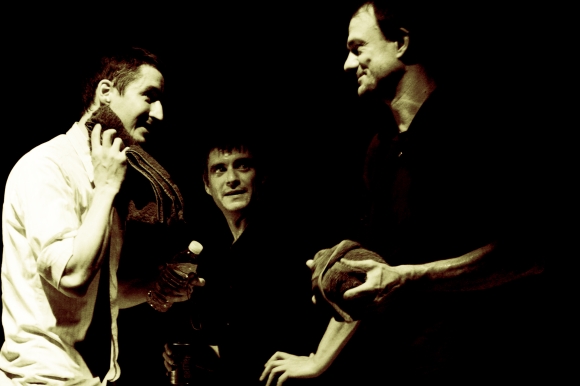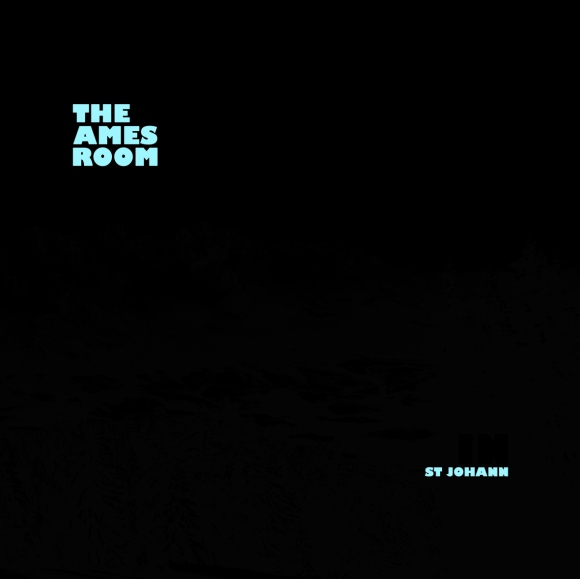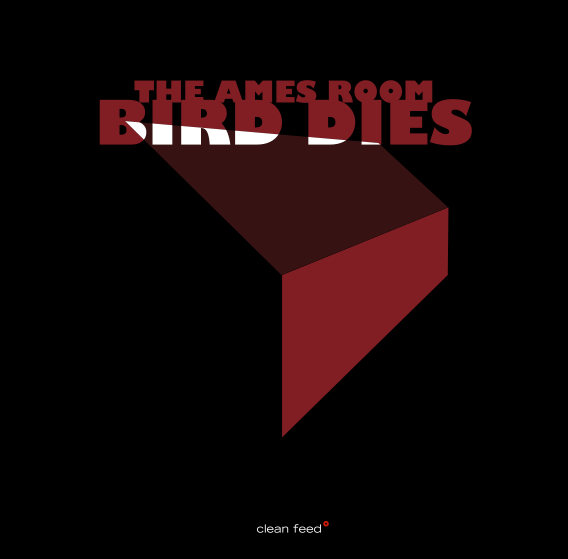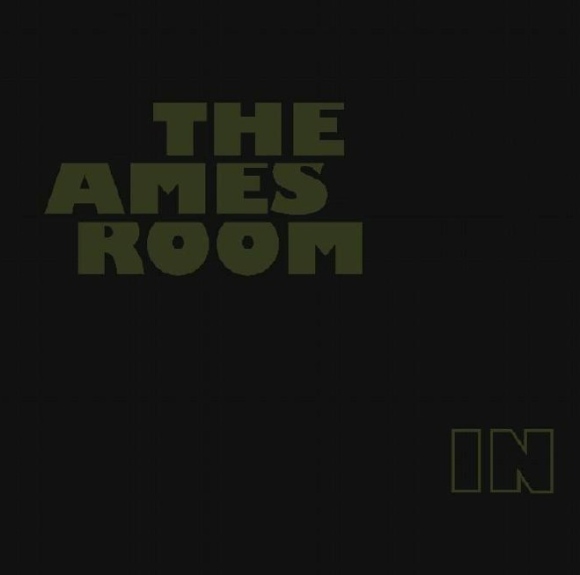Jean-Luc Guionnet – alto saxophone
Will Guthrie – drums
Clayton Thomas – double bass
New CD/LP IN ST JOHANN out now on GAFFER RECORDS
How do they do it? How does THE AMES ROOM continue to wring substantial blood from that ancient stone? The stone in question being the moldering carcass of no-holds-barred free jazz, a lamented beast that has regularly suffered indignities these past couple of decades by well-meaning folk who insist on CPR maneuvers long after the entity has flat-lined. At least part of the answer has to do with discerning musicians who have wide experience in other genres honing in on the seriously vital sources of the music and dealing with the essences found there, not the superficialities. Brian Olewnick
The three members of THE AMES ROOM are involved in a multitude of musical activities: free improvisation, electro-acoustic composition, jazz, installations, noise, rock, however all three share a passion for free jazz at it’s most energetic and brutal heights. The music rests somewhere between Roscoe Mitchell’s Noonah, Last Exit’s tribal adventures, and Henry Threadgill’s spider web like tapestries of sound. Between them the three members have worked/work with the likes of Peter Brötzmann, Jim Denley, Robin Fox, Chris Abrahams, Axel Dorner, Johannes Bauer, Paul Lovens, Burkhard Beins, Keith Rowe, Jerome Noetinger, Thomas Ankersmit, Andy Moor, Tony Buck, Eric La Casa, Eric Cordier, Philipp Samartzis , Marc Baron …
ALL ABOUT JAZZ GUIDE – REVIEW By GLENN ASTARITA,
January 7, 2012
Encompassed by the 48-minute marathon title track, the live performance captured on Bird Dies is irrefutably exhilarating. Featuring French alto saxophonist Jean Luc Guionnet‘s lead voice, The Ames Room embarks on a splintered approach to free-bop, propelled by drummer Will Guthrie‘s penetrating beats and bassist Clayton Thomas’ pumping bottom.
Perhaps the album title serves as an antithesis to the “Bird Lives” maxim ascribed to bop’s troubled genius Charlie Parker, where the hustling, pawning of saxophones, and recurring substance abuse led to his passing. This fast-paced memorial is conceivably exercised on a broad plane via the trio’s loose, but pummeling ostinatos, nestled within a fractured loop of concepts.
Guionnet’s rough-hewn tone is built on animated and staggered phrasings. Throughout the band’s relentless momentum, he carves out a tumultuous soundscape, filtered through the buoyant rhythmic element. Repetitive to some extent, the in-your-face gait offers a forum for extensive improvisation; nonetheless, it’s a high-impact endeavor that must have kept the audience on the edge of its seats.
The musicians exude angst, chaos and a locomotive-like cyclical impetus, tinted with a guttural underpinning via blistering choruses and understated variations. A relatively young band, the artists stay on target by engineering a consistent foundation, and do not simply waver into a free-form abyss during the course of the proceedings. The Ames Room provides a tensely articulated mosaic of sound, transposed into a blueprint for originality, which is a commendable attribute when considering these avant-garde-based endeavors.
JAZZ WRAP REVIEW
Debut LP ‘in’ limited numbers still available at:
http://www.monotyperecords.com/
Contact, bookings:
theamesroom@gmail.com
——————
Reviews of our debut LP ‘IN’:
‘Now, here’s a pleasant surprise! A raging, unabashedly free jazz trio that works. Jean-Luc Guionnet (he of the excellent organ disc, “Non-Organic Bias”) on alto, Clayton Thomas on bass and Will Guthrie on drums. Two non-stop live onslaughts of intense jazz-based improv that manages to avoid almost all the self-indulgence and gabbiness of the huge majority of such attempts in recent decades. How? I’m not sure, though Guthrie’s amazingly solid and imaginatively propulsive drumming certainly helps and Guionnet, for his part, somehow manages, though he virtually never takes horn from mouth and is generally in screaming mode, not to place himself at the center of attention. One automatically thinks of comparisons; somewhere between Lyons/Sirone/Cyrille and Mitchell/Favors/Moye? These sets have all the great energy that those trios may have had in the 70s. Even so, is it an open question as to the viability of such an approach in 2010? Most assuredly, but The Ames Room makes a strong case. btw, I’d forgotten the association until I looked it up, though I’d seen it many a time, but the original “Ames Room” is that 3D optical illusion. Hard to define, but I like that allusion vis a vis this trio’s relationship to classic free jazz. Check it out, in any case, especially you die-hard jazz fans…’
Brian Olewnick.



